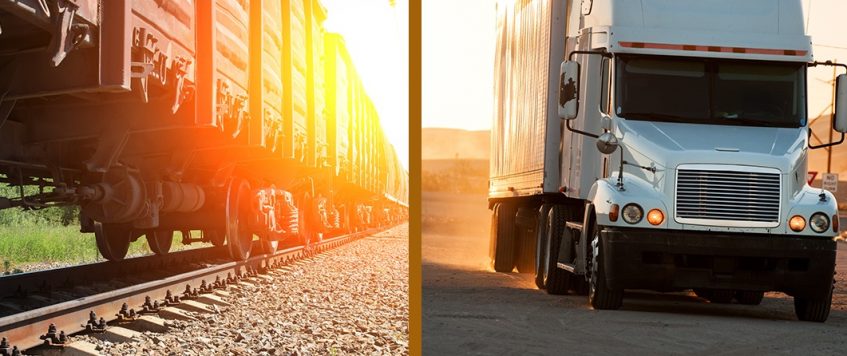-
21
Feb
US Intermodal Transport Congestion
Tens of thousands of container loads of cargo that would normally move on railroads are being hauled on American roads each month as companies look to get around continuing supply-chain bottle-necks. U.S. intermodal transports, in which railroads carry containers and truck trailers, were down nearly 12% in the first six weeks of this year from a year ago, according to the Association of American Railroads, after tumbling in the second half of last year even as retailers and manufacturers rushed to bring in goods.
Trucking and rail industry officials say demand to move freight 500 miles or more, which is often done by rail, remains strong, as companies restock depleted inventories. But shippers are more often than usual choosing highways over railroads because shortages of labor, equipment and warehouse space across supply chains can create unpredictable delays. Railroads “should be seizing the day and winning more business,” said Paul Svindland, chief executive of Bensenville, Ill.-based STG Logistics. Mr. Svindland’s firm has been placing more cargo than usual on trucks because he can’t find enough of the containers railroads need to most easily handle such shipments, he said.
Intermodal transport, which uses trucking for the final leg of delivery, is slower and more complicated than long-haul trucking. But it is also cheaper and less damaging to the environment. Lawrence Gross, president of Gross Transportation Consulting, said intermodal loads have lost a little over 1% of their market share to long-distance trucking since the Covid-19 pandemic began. Based on current freight volumes, that translates to about 30,000 additional long-distance truck moves each week, he said.
John Gray, senior vice president for policy and economics at the AAR, said freight railroads could comfortably handle an extra 20,000 to 30,000 intermodal loads a week. “I am confident there is a lot more capacity out there,” Mr. Gray said.
U.S. supply chains are struggling to ingest record cargo volumes that began surging into the country in the summer of 2020, a few months after the Covid-19 pandemic triggered lockdowns, when consumers switched their spending from services to goods. Imports were up 14% in 2021 over the year before at the nation’s busiest container port complex at Los Angeles and Long Beach, CA, clogging port terminals, rail yards, truck yards and warehouses.
Railroads carried record levels of inter-modal cargo toward the end of 2020 and through the first half of 2021. But last summer, the system ground to a halt as rail yards in the Chicago area filled with tens of thousands of boxes, backing up shipments at a key hub for transport to destinations east of the Mississippi River. Rail and trucking industry officials say the congestion was caused by too many boxes flowing into the region for warehouses and truckers to handle, a situation that has popped up intermittently at other intermodal hubs around the country.
Jim Filter, chief commercial officer of Green Bay, WI. based trucking and logistics provider Schneider National Inc., said shipping customers took 30% longer than usual, on average, to unload containers last year because their warehouse space was packed and they had too few workers. That tied up the containers and the steel trailers used to pull boxes, making it harder to find equipment al-ready in short supply.
In July, some railroads restricted cargo into Chicago for days until the bottlenecks cleared, pushing shippers to trucking for long-distance routes to inland warehouses. The period coincided with massive bottlenecks at U.S. ports, where container ships at the port complex in Southern California waited weeks or months to unload cargo.
To make up for lost time, some shippers chose to pay more for the certainty and speed of trucking. Truckload volumes moving through the spot market on routes that mirror the nation’s busiest inland route, from Los Angeles to Chicago, were up 130% year-over-year in early February.
Such demand is contributing to high trucking rates. Dean Croke, DAT’s principal freight market analyst, said spot rates on the Los Angeles to Chicago routes are up 59% year-over-year. But railroad officials say there are signs intermodal freight is beginning to bounce back. Tom Williams, group vice president for the consumer products business unit of BNSF Railway, said intermodal cargo volumes on container ships en route to the United States are up 25% compared with the start of the year.
Still, officials warn that without sufficient equipment, truck drivers, warehouse space and workers to process cargo, rail systems could become clogged again.
“We need the entire chain to be able to handle it at the same pace so we don’t get into a similar situation where the trains keep coming and the street and the warehouses can’t process it fast enough,” said Elise Gosch, assistant vice president of intermodal sales at Union Pacific Corp.
by Paul Berger at WSJ

